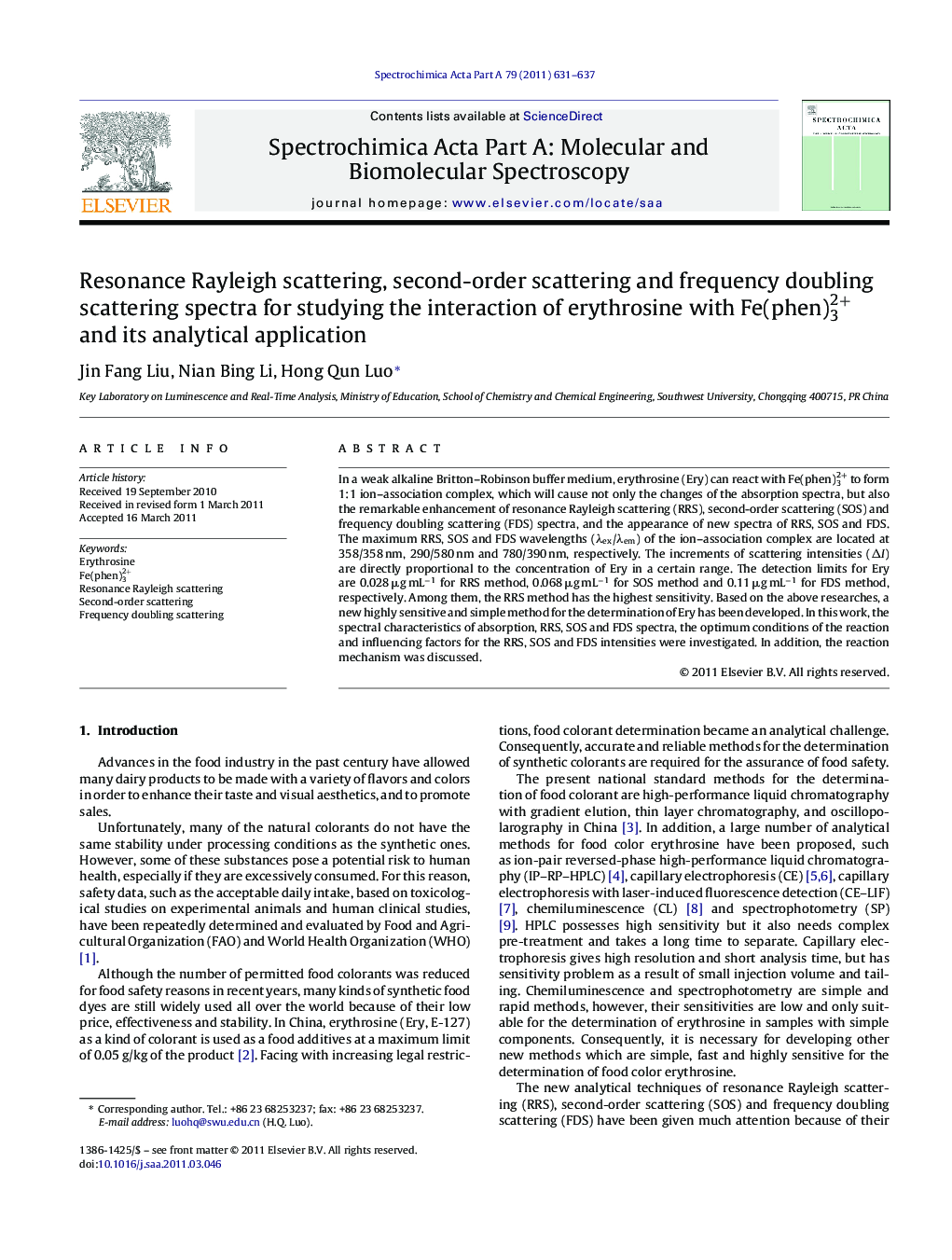| Article ID | Journal | Published Year | Pages | File Type |
|---|---|---|---|---|
| 1235496 | Spectrochimica Acta Part A: Molecular and Biomolecular Spectroscopy | 2011 | 7 Pages |
In a weak alkaline Britton–Robinson buffer medium, erythrosine (Ery) can react with Fe(phen)32+ to form 1:1 ion–association complex, which will cause not only the changes of the absorption spectra, but also the remarkable enhancement of resonance Rayleigh scattering (RRS), second-order scattering (SOS) and frequency doubling scattering (FDS) spectra, and the appearance of new spectra of RRS, SOS and FDS. The maximum RRS, SOS and FDS wavelengths (λex/λem) of the ion–association complex are located at 358/358 nm, 290/580 nm and 780/390 nm, respectively. The increments of scattering intensities (ΔI) are directly proportional to the concentration of Ery in a certain range. The detection limits for Ery are 0.028 μg mL−1 for RRS method, 0.068 μg mL−1 for SOS method and 0.11 μg mL−1 for FDS method, respectively. Among them, the RRS method has the highest sensitivity. Based on the above researches, a new highly sensitive and simple method for the determination of Ery has been developed. In this work, the spectral characteristics of absorption, RRS, SOS and FDS spectra, the optimum conditions of the reaction and influencing factors for the RRS, SOS and FDS intensities were investigated. In addition, the reaction mechanism was discussed.
Graphical abstractFigure optionsDownload full-size imageDownload as PowerPoint slideHighlights► RRS, SOS and FDS spectra of the erythrosine-Fe(phen)32+ system were studied. ► Novel methods to determine erythrosine by RRS, SOS and FDS were established. ► The possible mechanism of the interaction was discussed. ► The detection limit of erythrosine reached nanogram level.
